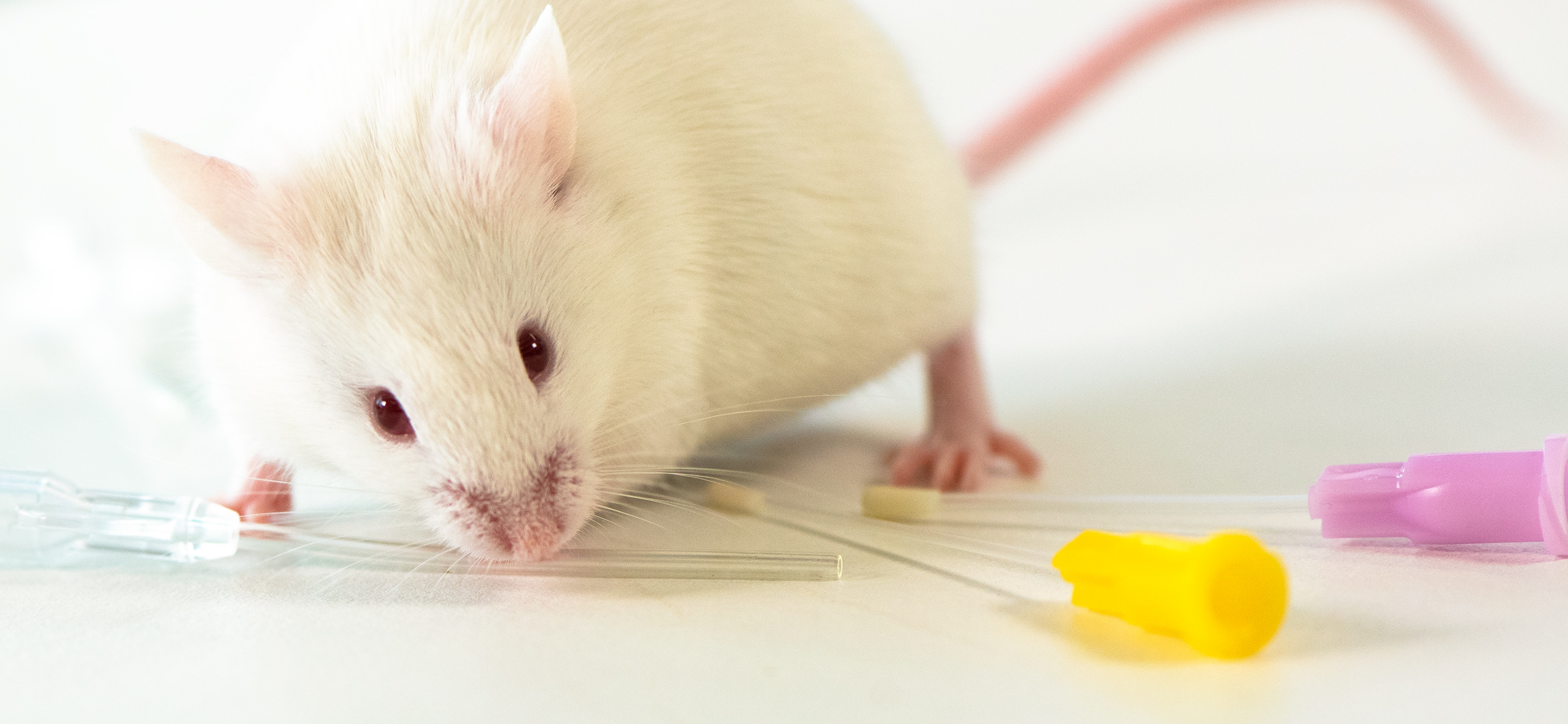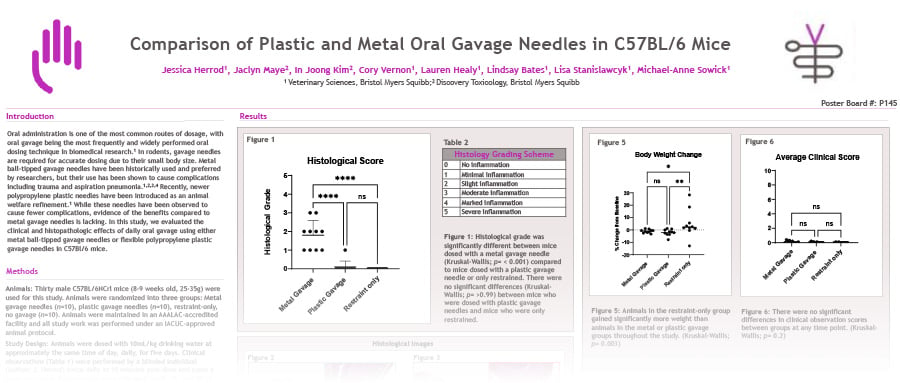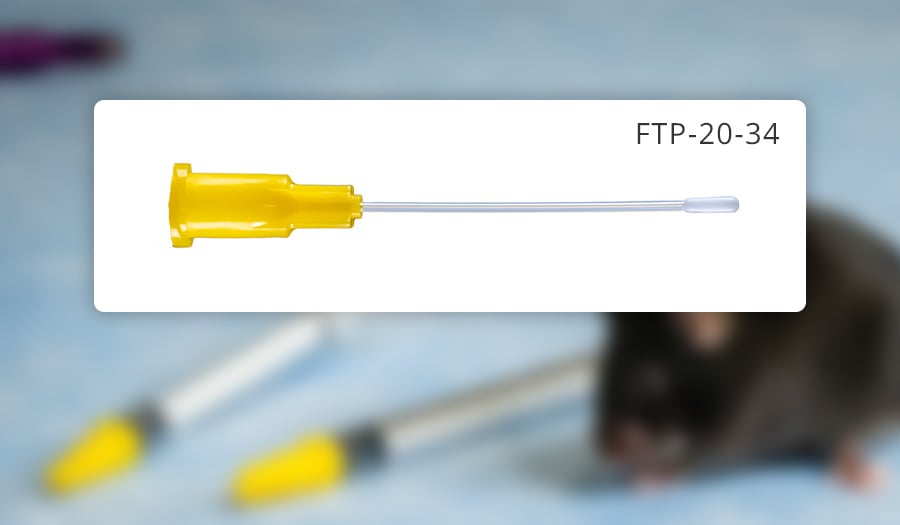
Flexible plastic feeding tubes have any number of benefits. By their very nature, the plastic tubes can be damaged or severed if they are bitten. This is the most common issue encountered when switching from stainless to plastic tubes. Some manufacturers have plastic tubes with metal bite guards to help reduce this problem. This is a bandaid to cover up poor technique. If the animal is biting the tube, that’s a sign of added stress. If this happens, stop! Take a moment to pause, reset your grip, and try again. The animal’s comfort comes first! A dose should never be a struggle or forced. Traditional stainless steel feeding tubes are dosed by going straight down the esophagus between the teeth. If the mouse or rat should bite the tube, it’s metal so no damage to the tube is done, and you have less of an indicator that your animal is under stress. When using plastic tubes for dosing, it’s important to go along the side of the mouth away from the teeth. Not only is this more comfortable for the rodent, but it prevents biting as well. Learn how to orally dose mice and rats
Note sure whether to use stainless steel or flexible plastic feeding tubes? Read the pros and cons of each
Ok ok - so now your technique is sound, but you’re still nervous about the rare biting instance. Why not just use a bite guard as an added safety blanket? Bite guards also increase the thickness of the tube. Thickness of the tube at the distal end can sometimes cause bleeding around the oral external cavity (rat lips bleed). Tubes with bite guards also cost more. It’s really just best to stick to the feeding tube as it was originally manufactured.
When making the switch to flexible plastic and wondering about bite guards, just learn the proper technique (we have trained technicians on staff who can help!) and you’ll soon find that both you, and your rodents, are happier.


